Do you have a passion for trains? If so, Arduino model railroad projects may be the perfect hobby for you! In this article, we will provide a comprehensive guide to creating your very own Arduino-powered model railroad. We will answer some common questions and provide useful tips to get you started. So, what are you waiting for? Let’s get started!
Arduino and Its Benefits
Arduino is a great choice for those who want to get started with programming because it allows users to control their projects without needing any prior experience in coding or electronics.
Using the Arduino platform gives users access to hundreds of components designed specifically for use with the board including motors, LED lights, buttons and other input/output devices. This makes it easy to build complex projects quickly and efficiently. Additionally, there are many libraries available that provide pre-written code which can help speed up development time significantly.
The user community surrounding Arduino is very active and helpful which makes learning how to use the platform and troubleshoot projects much easier. There are also tons of tutorials and resources available that make it easy for new users to get started quickly.
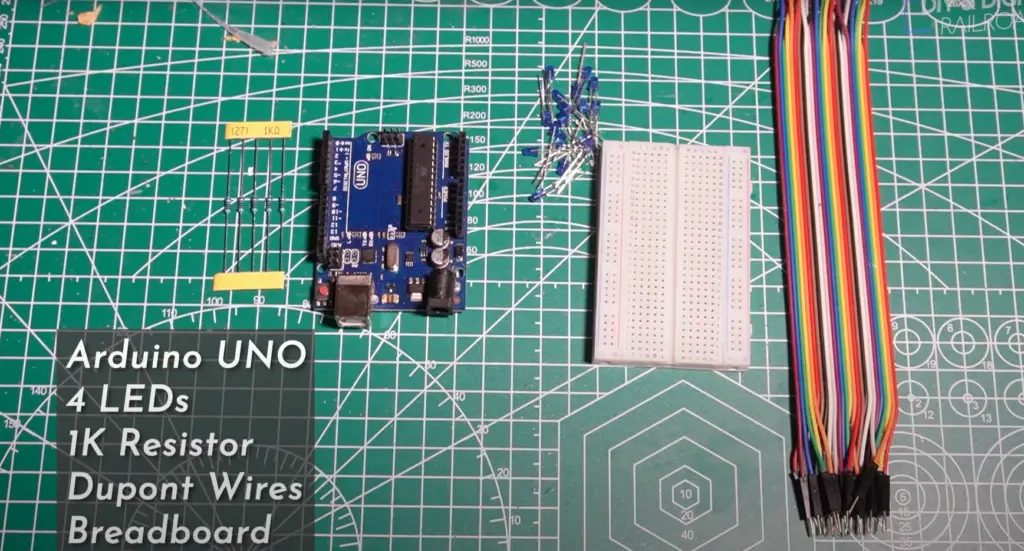
On top of all this, Arduino is relatively affordable and accessible compared to other physical computing platforms. This makes it a great choice for hobbyists, students, makers, and anyone else looking to get started with physical computing without having to spend too much money or time.
Overall, the Arduino platform is an incredibly powerful tool that can be used for creating anything from simple electronic devices to complex robotic projects. Its user-friendly nature and accessible cost make it a great option for those just getting into programming or physical computing in general. [1]
Is Arduino Capable of Creating an Automated Model Railroad?
Yes, Arduino is capable of creating an automated model railroad. This is because of its versatile capabilities and millions of project examples available online.
Arduino can be programmed to control your model railroad’s locomotives and other vehicles, sound effects, lighting systems, signals, etc. It can also be used to automate complex tasks such as reversing trains on a specific track section or automatically switching routes based on the time of day. All these features allow you to create a realistic and fun experience for your model railroad setup.
Moreover, since Arduino allows for open-source programming, it becomes much easier to integrate additional components into your project without any extra effort – like sensors that detect motion or light in the area or even external controllers and servos to move physical parts of your layout. With all these possibilities, you can create a fully automated model railroad with Arduino that is both fun and realistic to operate.
The Arduino platform also has an extensive library of project tutorials and examples available online – from basic circuits to complex projects with multiple components. This makes it easier for even beginners to quickly get started on their first Arduino model railroad project without any prior experience in electronics or programming.
Finally, the small form factor and low cost of the Arduino make it an ideal choice for model railroads since most layouts don’t require much space or power requirements. With the right setup, you can create a great model railroad with minimal effort using just this one powerful microcontroller!
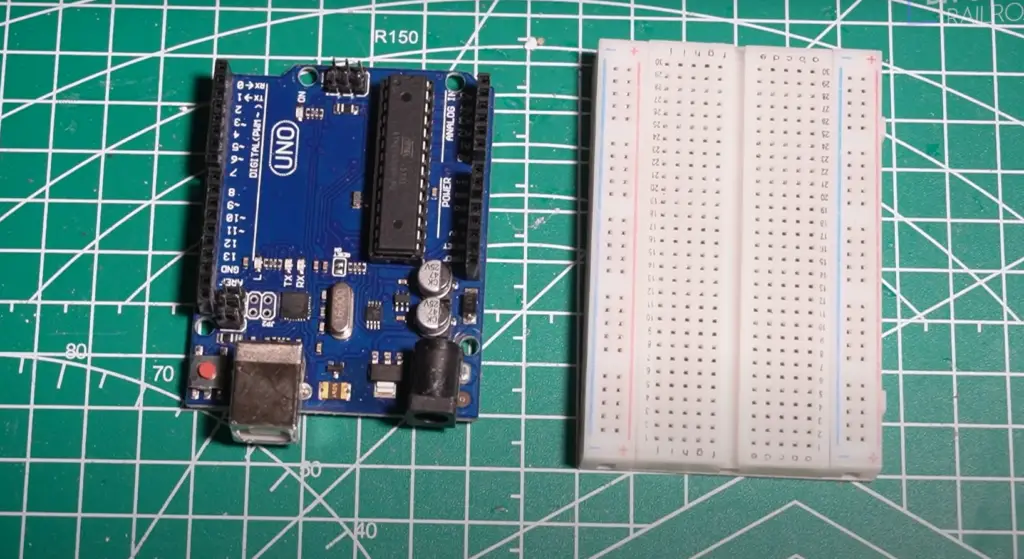
What to Consider Before Starting an Arduino Model Railroad Project
While the Arduino project model railroads can be a fun and rewarding hobby, there are some important considerations to keep in mind.
The scope of the project
The size and complexity of your Arduino model railroad project will depend on the available space, budget, and desired end product. Look at how much room is available in your home or workspace and if you need to make any modifications before beginning. Consider what type of setup you want including how many tracks, trains, bridges, buildings, etc. All this information will help determine the scope of the project.
Materials needed
Depending on the size and complexity of your project there are a variety of materials that may be needed such as wood for building structures or shelves for mounting tracks, plastic for scenery pieces, paint for scenery details, wiring for power connections between components, battery packs for portable power sources when using DC track systems, and of course the Arduino board and components.
Budget
Obviously budget is an important consideration for any type of project, but especially model railroads.
Arduino projects can drain a lot of money for the components and materials needed, so it’s important to plan ahead and budget accordingly.
Expertise required
Depending on your experience level with Arduino projects and model railroading, you may need help from someone else with more knowledge or skills in these areas. There are many resources available online such as forums and videos that can help you get started. However, enlisting the help of a friend or professional may be necessary if the project is more complex than initially anticipated.
Finally, make sure to take your time and enjoy the process! Many model railroaders find that the most rewarding part of building an Arduino model railroad is watching it come together, piece by piece. With some patience and effort, there’s no doubt that your project will turn out great in the end. [2]

Automated Model Railway Using Arduino
Creating an automated model railway using Arduino is a great way to take your hobby to the next level. With this versatile microcontroller, you can easily create complex projects that offer realistic and immersive experiences to your model railway layout without needing any prior knowledge in electronics or programming.
In this section, we’ll discuss how exactly you can create an automated railway using Arduino with step-by-step instructions.
Gather the Required Equipment
Obviously, the first step to creating an automated model railway using Arduino is to gather the required equipment. You’ll need the following items before you can get started:
- An Arduino microcontroller
- An L293N motor driver module
- A ‘sensored’ track
- A 12-volt DC power source (1000mA)
- Jumper wires
- A crosshead screwdriver
- A suitable USB cable to connect the Arduino board to the computer
Send code to Arduino
Once you have gathered all the needed materials, you will need to write a program in Arduino and then send it onto the board. This code is responsible for controlling the train’s speed, direction and other features. A basic Arduino sketch (program) looks as follows:
int s; //Integer variable to store train’s speed in the range from 0 to 255.
int maxSpeed = 140;//Integer variable to store the maximum speed the train will reach.
int t = 5; //Time delay(pause, in seconds) between each loop of operation, from start to stop.
void motor_go(){
if(s>=1&&s<=255){
digitalWrite(9,LOW);
digitalWrite(8,HIGH);
analogWrite(10,s);
}
if(s<=-1&&s>=-255){
digitalWrite(8,LOW);
digitalWrite(9,HIGH);
analogWrite(10,-s);
}
if(s==0){
digitalWrite(9,LOW);
digitalWrite(8,LOW);
analogWrite(10,s);
}
}
void setup() {
// put your setup code here, to run once:
pinMode(10,OUTPUT);
pinMode(9,OUTPUT);
pinMode(8,OUTPUT);
pinMode(A0,INPUT);
delay(2000);
}
void loop() {
// put your main code here, to run repeatedly:
for(s=0;s<=30;s++){ //Providing low voltage to the tracks to just turn on the locomotive’s lights.
motor_go();
delay(10);
}
delay(4000);
for(s=s;s<=50;s++){ //Starting the train.
motor_go();
delay(500);
}
delay(5000);
for(s=s;s<=80;s++){ //Speeding up a bit.
motor_go();
delay(500);
}
delay(1000);
while(digitalRead(A0)==LOW); //Wait for the train to cross the ‘sensored’ track.
for(s=s;s<=maxSpeed;s++){ //Speeding up the train to maximum speed value set in the beginning.
motor_go();
delay(500);
}
delay(1000);
while(digitalRead(A0)==LOW); //Wait for the train to cross the ‘sensored’ track.
delay(2000);
for(s=s;s!=100;s–){ //Slow down the train a bit.
motor_go();
delay(1000);
}
delay(4000);
while(digitalRead(A0)==LOW); //Wait for the train to cross the ‘sensored’ track.
for(s=s;s!=80;s–){ //Slow down the train furthur.
motor_go();
delay(500);
}
delay(4000);
for(s=s;s!=60;s–){ //Slow down the train, preparing to stop.
motor_go();
delay(500);
}
delay(1000);
while(digitalRead(A0)==LOW); //Wait for the train to cross the ‘sensored’ track.
delay(1000);
for(s=s;s!=20;s–){ //Reduce the voltage on the tracks to just let the locomotive lights turned on.
motor_go();
delay(250);
}
delay(1000);
for(s=s;s!=0;s–){ //Stop the power supply to the track and power down the locomotive.
motor_go();
delay(125/2);
}
delay(1000*t); //Wait for the set time before starting all over again.
}
You don’t need to change anything at this stage, however once you get a gist of what the code does, you can change the values of variables such as maxSpeed, s, t etc. to suit your needs better.
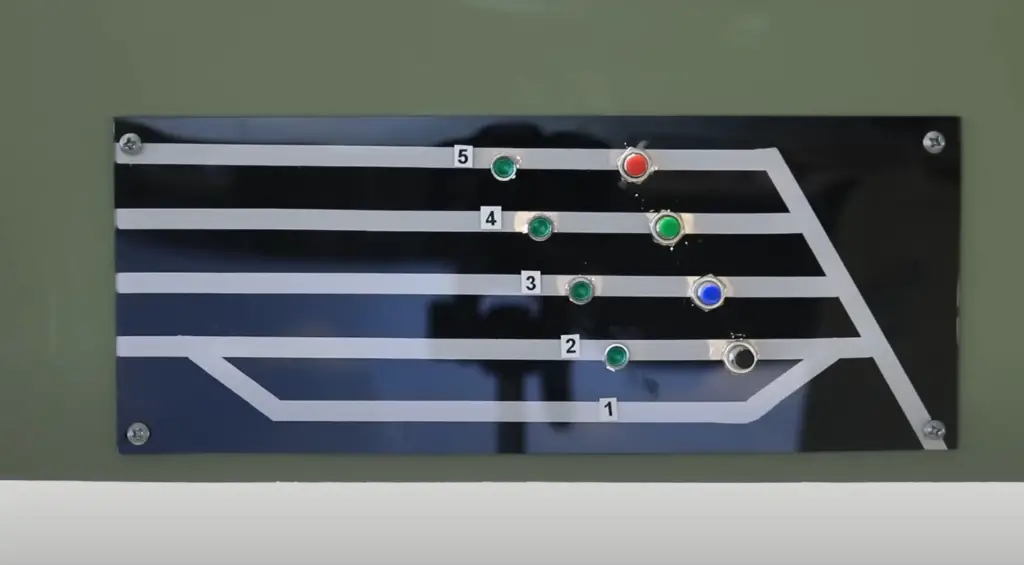
Set up the layout
Next, you need to set up the layout for your model railroad. This involves connecting track pieces, setting up obstacles, mounting locomotives, and possibly adding other decorative elements such as trees or short buildings. Depending on the size of the layout, this step can take some time so plan accordingly.
You’ll also need to connect a ‘sensored’ track which will be used as an input device for Arduino by sending a signal when the train passes over it. This can be done either by cutting open a piece of conventional track and attaching wires to the rails or using ready-made sensing track pieces available in stores that specialize in model railway supplies.
For this task, you will need to place the tracks in oval or circle shape and make sure that the track pieces are not making contact with each other. Also, check to see if all of your train tracks line up correctly by running a locomotive over them.
Wire the motor driver
After you have set up the layout for your model railroad, it’s time to wire the motor driver. This is a key step as it will allow you to control the locomotive with Arduino.
First of all, you will need to remove the jumper connection from the ENB Pin of the motor driver. This will allow you to control the speed of the locomotive using Arduino’s PWM capabilities.
The wiring of the motor drive consists of connecting the ‘ENB’ pin to pin D10 of the Arduino board, IN 3 to the pin D8 and IN 4 pin to D9.
Connect power wires to the motor driver and Arduino
Next, you need to connect the power wires of your track to the motor driver. For this, you will need to connect the output terminal’s wires to the power feeder connector.
Now it’s time to check the sensored track connection. Connect the VCC pin to +5-volt pin of the Arduino board and the GND pin to the GND pin of the Arduino board. Then, connect the OUT pin to the A0 pin of the Arduino board.
Place the train on the tracks
Finally, you need to place the locomotive on the tracks and make sure that it is connected correctly to the power source. This can be done by connecting the Arduino boards power input to the power supply and turning it on.
Test It Out!
Once you’ve sent the code to Arduino, it’s time to test out if all is working fine or not.
Once everything looks good, it’s time to power up the circuit and test it out.

You can do this by running a locomotive over the tracks and checking if the lights are turning on/off as expected. If everything looks good, you’re all set! Congratulations! You have successfully built your own Arduino model railroad project. Enjoy watching your new creation in action! [3]
Possible Variations of the Project
So we discussed above how to build a basic Arduino model railroad project and you’re now ready to start experimenting with the possibilities that this technology offers. In this section, we’ll cover some possible variations and applications of the project.
The URB system
The URB System railway can be an exciting and cost-efficient option for those looking to create their own Arduino model railroad projects. The system uses standard DCC (Digital Command Control) principles to control the locomotives and consists of small, self-contained modules that are easy to install. The system also supports a wide range of popular feedback devices such as S88, Rocrail, and Lenz Digital Plus, allowing you to get precisely the level of automation you need.
L298 Motor Driver System railway
While OG model railroad work using two DC motors, these days many people have turned to the L298 motor driver system to power their model railway. This is a two-channel H-bridge motor driver shield that can drive up to 2A per channel.
The benefits of using an L298 motor driver include providing more precise control over your motors, allowing for smoother and faster speed transitions. The flexibility of the L298 also allows you to add additional features such as PWM (pulse width modulation) or step increment/decrement functionality.
The L298 motor driver system requires some additional wiring and circuitry, as well as a power supply that must be able to provide at least 2A per channel. In addition, the controller will require some additional programming which is normally done using the Arduino IDE.
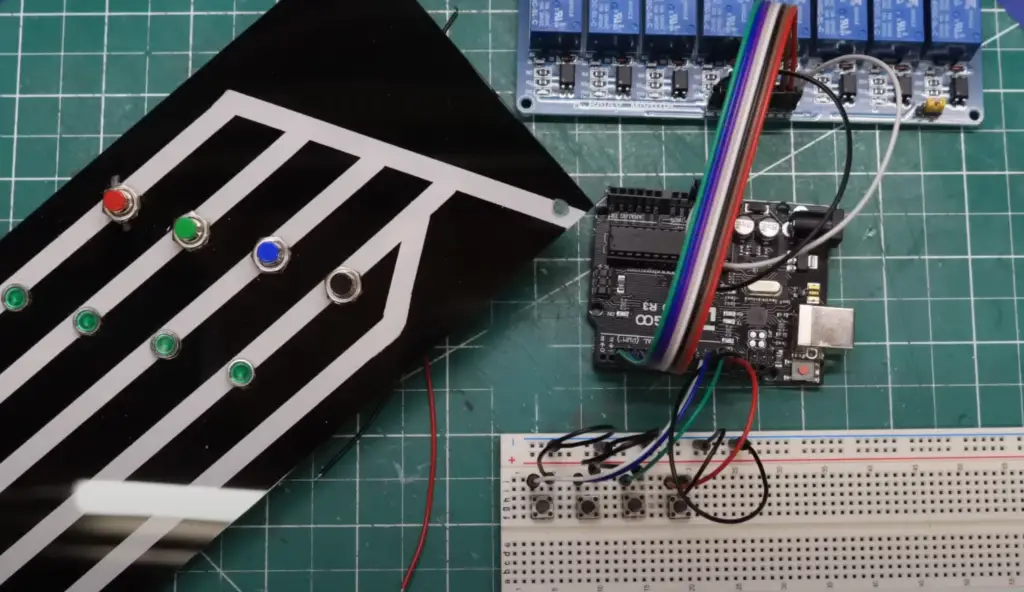
You may attach either a Bluetooth or Wi-Fi module which will allow you to control your model railway with a computer or smartphone. You can add additional functionality to your model train circuit by using Arduino sensors, such as a light sensor connected to one of the tracks which will cause the lights to turn on/off when the locomotive passes over it. Furthermore, you can also connect an ultrasonic sensor that senses obstacles ahead and changes the direction of the train automatically, or use an IR sensor for advanced obstacle detection and avoidance. [4]
FAQ
How much space do you need for a model railway?
The amount of space you need for a model railway will depend on several factors, including the scale you’re using and the size of your layout. Generally speaking, it’s best to plan for an area that is at least 6 feet by 4 feet. If you have more room available, then it’s recommended that you enlarge your layout accordingly to create an even more impressive display. Additionally, if your model railway is to be outdoors or in a public area, then extra space may be needed to accommodate spectators who want to view the trains in action.
When making plans for your model railway layout, it’s also important to consider any obstacles such as furniture and doorways that could affect your design. As you plan out the space, be sure to include enough room for all of your track pieces, accessories and buildings. If you plan on using an Arduino board, be sure to allow space for it as well!
Can you create a railway point control with Arduino?
Yes, you can create a railway point control with Arduino. The basic setup is to connect the Arduino to an external relay board that will act as a switch for the points. By using digital inputs, you can send commands from the Arduino to open and close the various points. Additionally, sensors can be connected to detect when trains are approaching and automatically change the points accordingly. With some additional programming and wiring, these simple systems can become quite advanced and provide more sophisticated operations such as adjusting speed or allowing multiple trains on different lines at once. To further enhance your project, RFID readers and tags can be used to identify specific locomotives and trigger individual commands based on their identity.
Is model train automation possible with Arduino?
Absolutely! By employing Arduino for model train automation, you can create a variety of projects that will breathe life into your railroad layout. Using Arduino to control the movement and speed of your trains is simple and requires minimal setup time. Additionally, using an Arduino board allows users to easily monitor and adjust their track voltage as well as add sound effects like simulated whistles, bells, and other engine noises. For those looking to take their projects one step further, basic coding skills are all that’s needed to begin programming locomotive behavior on the fly.
Is a DIY model railway controller a good project for a beginner?
Yes, a DIY model railway controller is an excellent project for a beginner. With the right components and a basic understanding of electronics and coding, you can easily create your own customized model railway controller with Arduino.
You will need to source some basic materials such as an Arduino board, resistors, capacitors and transistors. You may also require additional external hardware such as servo motors or switches. The most difficult part of designing this system is programming it into the Arduino board; however, with many helpful tutorials available online it should not be too daunting.
With some patience and dedication, you will soon have your own working model railway controller that you can program with custom settings and control functions to suit your needs.
What voltage do model trains run on?
Model trains generally run on direct current (DC) voltage, usually between 12 and 18 volts. If a model train is labeled “15V” this means that it runs on 15 Volts DC. To power the train safely, use an appropriate DC power source such as a battery or a battery charger.
Just keep in mind that the voltage requirements will vary depending on the type of locomotive you are using. For example, some HO scale locomotives require 12V DC while N scale models may require 18V. It’s best to consult your manufacturer’s instructions or contact them directly if you have any questions about the specific voltage requirements of your model train.
Useful Video: Routing Control for Your Model Railroad Layout with Arduino
Conclusion
Arduino is an open-source platform that is easy to use and provides a wide variety of features for model railroad projects. From communicating with servos and motors, to reading sensors or controlling lights and sounds, the possibilities are nearly endless.
In this article, we have explored some of the more common applications using Arduino in the world of model railroading. We discussed components needed for an Arduino project, as well as how to set up your project hardware and connect it to your computer. Finally, we took a look at some example code and discussed how you can modify it to fit your needs. Now that you have some knowledge on using Arduino for model railroading projects, you will be able to move forward with expanding your own ideas into reality.
If you have any questions or comments, please leave them below. We would love to hear your thoughts on the article, as well as your experiences with Arduino model railroading projects. Happy tinkering!
References
- https://learn.sparkfun.com/tutorials/what-is-an-arduino/all
- https://www.digikey.com/en/articles/10-things-to-know-before-starting-your-arduino-project
- https://www.instructables.com/Simple-Automated-Model-Railway-Layout-Arduino-Cont/
- https://arduinorailwaycontrol.com/examples.html





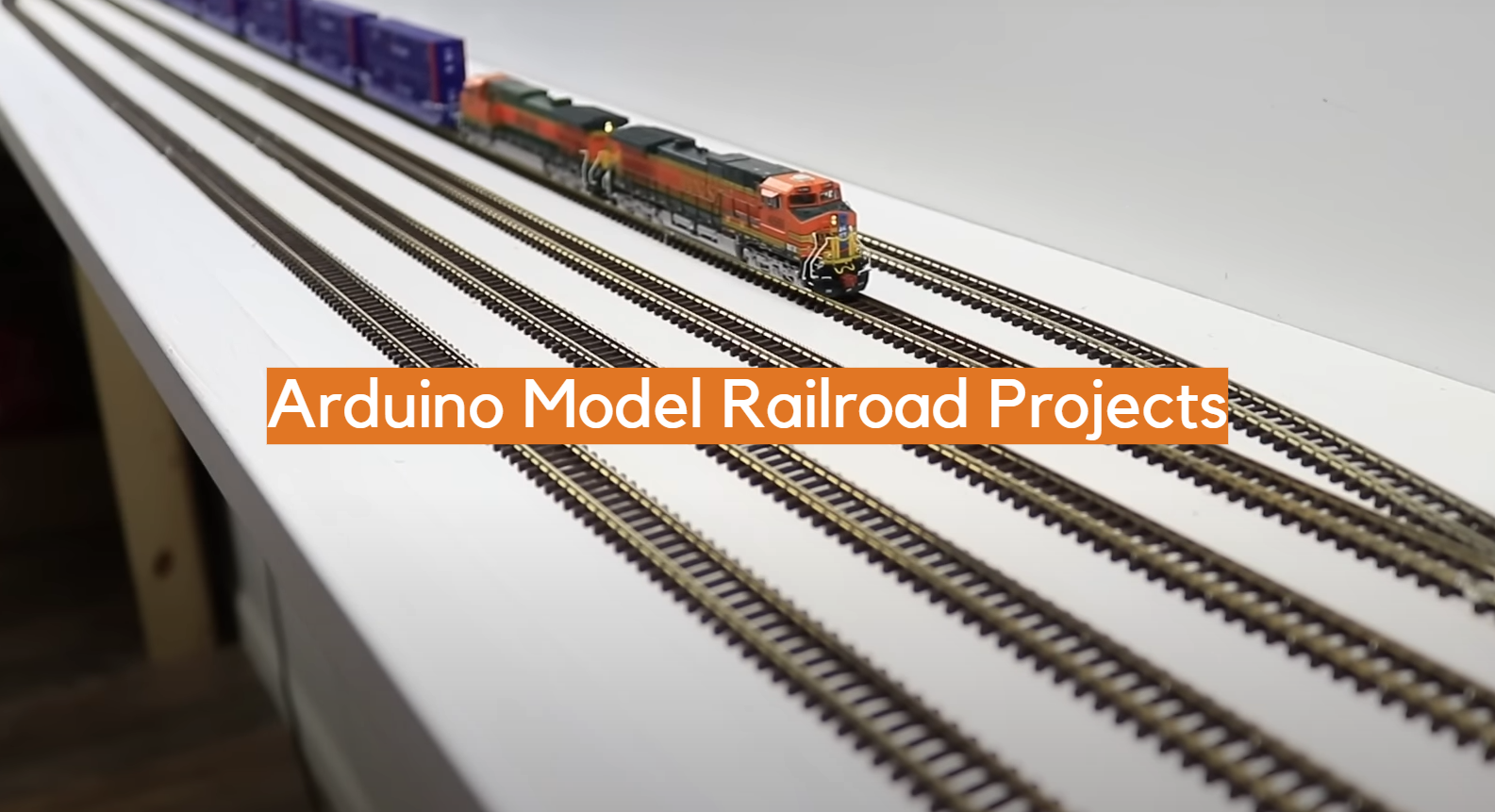







Leave a Reply